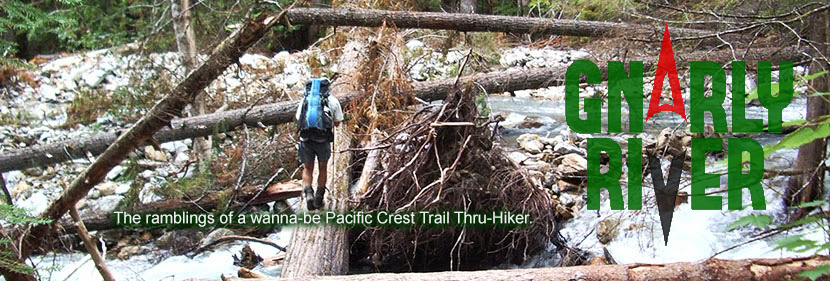The first thing I do is determine my route and my preferred campsites. Then I figure out the distance between campsites which is the distance to travel that day. Then I divide the number of miles by my estimated speed. I always estimate conservatively. Even though my average pace is about 3.5 miles per hour, I will generally use 2.8 miles per hour for this estimating. This gives me the number of hours I am going to hike for the day. I multiply this time 100 and I get the number of calories I want to eat while I am hiking.
The planning I do is based on the research by Brenda Braaten, Ph.D., R.D. found here: Pack Light Eat Right. I have read through her research and I have adjusted my menus accordingly. I have noticed a big difference in the length of time I able to hike in a day and the way I feel while hiking since I changed my menu to be closer to her recommendations. The author suggests that the main thing to focus on is the number of calories in your food, more specifically fat and complex carbohydrates. Yes protein, vitamins, and such are important, but the main thing a long-distance hiker needs is calories, you are eating for fuel. Then densest form of fuel is found in fat. Protein and Carbohydrates both have 4 calories per gram while fat has 9 calories per gram. Pound for pound, carrying fat over protein and carbohydrates more than doubles the fuel per pound! The author also explains that you need carbohydrates while hiking and suggests eating about 20 grams of carbohydrates and / or 100 calories per hour. I have adopted this as a guide and basically plan for a snack of about 100 calories of mostly complex carbohydrates and fat every hour.
For example: From the Mexican border to Lake Morena is 20 miles. I divide 20 by 2.8 and round up, This works out to 8 hours of hiking. Then I multiply 8 times 100, which is 800 hundred calories. This means that I plan to eat 800 calories in snacks on that day.
Everyday while hiking I eat a mix of cashews, pistachios (pre-shelled), and almonds. I also eat Almond M&Ms, M&Ms, banana chips, Oreos, Fritos, dehydrated fruit, Power Bars, Clif bars, Poptarts, pretzels, Cornnuts, , etc.
Each morning during breakfast I stuff my pockets with the snacks for the day. Every hour or so I pull out a snack and eat it slowly during that hour. I have found that following this process I can hike 5 or 6 hours straight.
Breakfasts are my intro for the day. I have tried all kinds of different combinations, but I keep coming back to my favorite, Trader Joe's Maple Pecan Just the Clusters granola, Vanilla Instant Breakfast, a couple of ounces of freeze dried fruit, and a Starbucks Via Mocha or Vanilla Latte. I have tried other things, like instant oatmeal or Mountain House Breakfast Skillet in a tortilla. They are tasty and easy, but whenever I have those I end up missing my regular granola and fruit with coffee.
Lunches are a chance to take a break in the middle of the day, to re-charge, rest, and eat something. I like a packet of tuna packed in oil, a tortilla, and a couple of packets of mayonnaise. I also eat beef jerky, Fritos, Nutella, peanut butter, etc.
Dinner always includes a small scoop of Cytomax in 8 ounces of water. This year I am going to go off the Mountain House reservation and have purchased the Chili / Soup mix combo pack from Harmony House. I have also purchased and re-packaged Honeyville Farms meat into separate quarter cup servings in vacuum-sealed bags. I am bringing a bulk quantity of instant rice, top ramen noodles, and instant refried beans. My plan is to combine one of the Chili or Soup mixes with a serving of meat and the starch of the day. I am planning to use the bag the meat is sealed in to combine all the ingredients with about a cup to a cup and a half of water.
The author of Pack Light Eat Right has a number of recipes. The one that I like best is the recipe for Trail Brownies. I make these up into separately packaged single servings for at least one per day. I eat these for dessert after my dinner. I always bring a few extra to share with my traveling companions.
The result of my planning is approximately two pounds of food per day. The next step is to divide this food into resupply boxes. My goal for resupply is to resupply no more than 4 days apart. I plan to never carry more than 4 days(or eight pounds) of food at a time. I am planning on carrying up to six liters of water. This means that food and water together is going to be about 20 pounds. The heaviest days will be the first day and resupply days. When I add than to my base weight of 11 pounds, the heaviest pack I will be carrying will never be more than 31 pounds and will average around 22 pounds. At that pack weight I plan on being able to travel between 25 and 30 miles per day.





